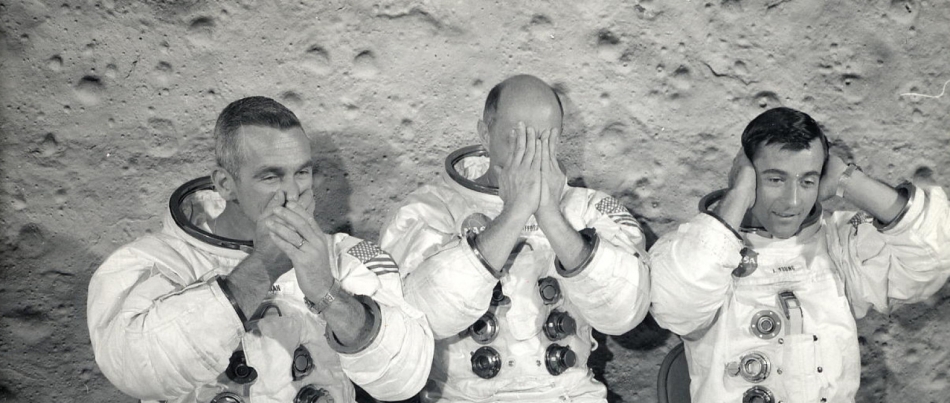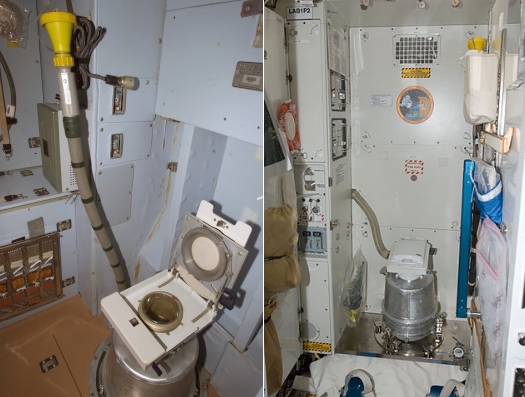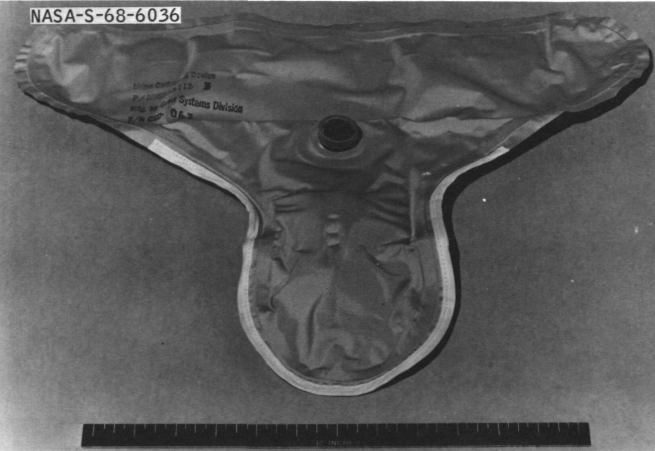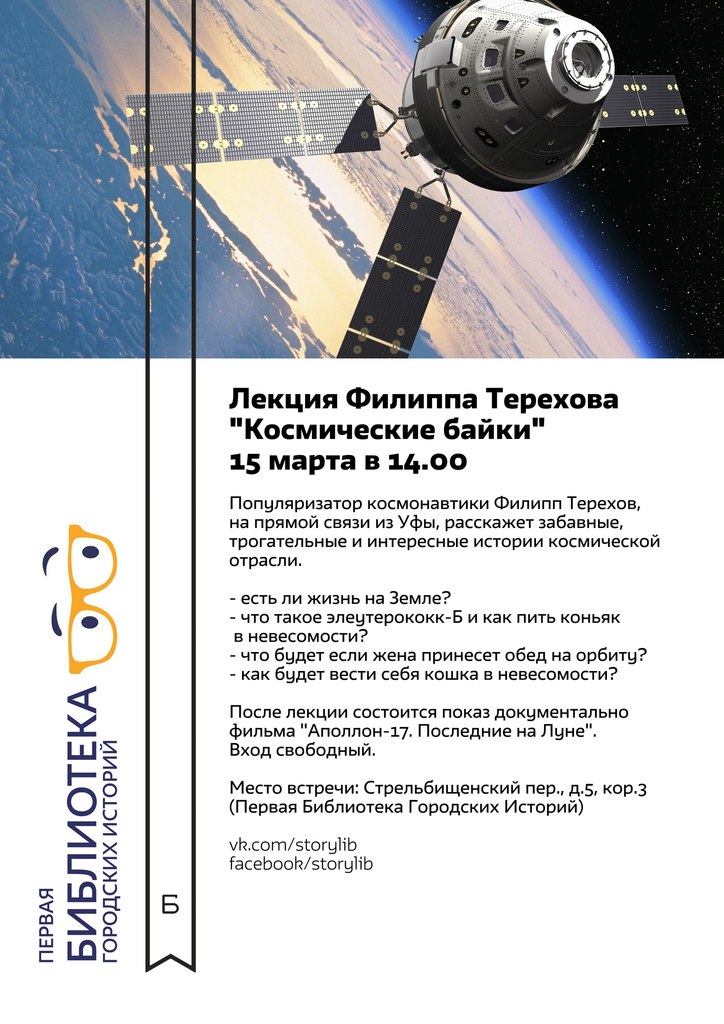History of space toilet

One day in your house begins overhaul of water supply and drainage systems. The workers remove the old water supply and sewage risers, and for a few days you become a bit an astronaut - wiping with wet wipes instead of showers, drinking water, technical and waste industrial water, discharges with bleach from odor and other inconveniences. Fortunately, more than half a century of history of space flight keeps enough stories to distract and elevate the mood. In fact, any repairs fade away before the inconvenience that has befallen, for example, Frank Borman and Jim Lowell on Gemini VII.
Human imperfection
The first toilet problems appeared at the very beginning of space flights. May 5, 1961. Astronaut Alan Shepard should be the first American in space. According to the plan, the suborbital flight should last only fifteen minutes, so none of the engineers began to think about human needs. However, due to problems with the weather and technology, the start was delayed, and at some point, Alan, who had already spent more than four hours in the cockpit (and more than eight hours in the spacesuit), said on the radio that he absolutely needed to go for a small need. A real problem arose in front of the MCC - an attempt to urinate into a spacesuit could lead to the failure of telemetry sensors, problems with the thermoregulation system of the spacesuit, in the worst (albeit unlikely) case, to a short circuit. The only alternative would be to cancel the flight - to give the service tower for a couple of minutes, to go to the toilet and return to the cabin there was no technical possibility. And, given the publicity of the launch, imagine the headlines if the flight were canceled for such a reason. They decided to take the risk - Shepard was allowed to relieve himself in a brilliant glamorous spacesuit. The accident did not happen, and the countdown continued. To the credit of Alan Shepard, he reacted to the situation with humor and joked that now he is a “wet back” (a slang for illegal Mexican migrants crossing the Rio Grande). The flight was successful, but still, when viewing the frames of the ceremonial meeting on an aircraft carrier, it is a little funny to know that Shepard’s back is wet ...
At the second American astronaut, Gus Grissom, they put on a two-layer leotard so that urine was contained between the layers. The decision was unsuccessful, and by the first orbital flight of John Glenn a simple urinal (UCD - Urine Collection Device) from a condom, tube and urine container was developed:
')

By the last flight of the ship “Mercury” the system was slightly changed. The urinal on the spacesuit supplemented with a stationary capacity. The astronaut had to pump the urine from the tank in the spacesuit to the stationary one with a manual pump. Shepard, who accompanied Cooper on the flight, made fun of him by putting a plunger into the cockpit. The joke turned out to be prophetic - the pump was working poorly, the hoses were leaking, urine balls were flying in the cabin. At least part of the short circuits in the last rounds of the flight were arranged by the flowing sewage disposal system, seriously complicating the flight.
And there was nothing for a great need for the ships “Mercury” - three days before the flight, the astronauts switched to a special diet, which reduces the amount of feces. In case of a flight delay (and this was regular), the diet was prolonged.
Soviet means great
The ships "Vostok" were designed for multi-hour flights, therefore the issues of the space toilet were solved in advance, and even Gagarin would go on a 108-minute flight with a full toilet, which would be enough for several days. The design allowed to cope with large and small needs and was relatively simple:

1 - receiver; 2 - collection of urine; 3 - air filter; 4 - fan; 5 - collection of fecal masses; 6 - clean air outlet; 7 - flexible hose; 8 - signal lamp.
The fan created a stream of air that, like a vacuum cleaner, sucked in the waste and prevented them from flying around the ship. The liquid fractions through the pipe fell into the collection of urine, where they were fixed in the spongy material. The solid fractions were retained in the collection of feces in a replaceable package. Then the bag was closed and cleaned in the waste compartment. The air filter provided air purification from an unpleasant smell. The big advantage of the toilet was suitability for both men and women, which provided interchangeable nozzles:

Top male nozzle, bottom female
Valery Bykovsky at Vostok-5 became the first cosmonaut who descended in space on a large scale, and this did not happen without curiosity. The report of Bykovsky on earth heard how “there was a space stuck”, became very frightened and even assembled a working group to calculate the mass of a meteorite, which Bykovsky might face to hear a knock. But through the turn, in the next communication session, the situation was resolved to general relief.
The design was so successful that has not undergone fundamental changes for more than half a century. On modern "Soyuz" there is almost the same toilet, differing only in the shape of the compartment of feces:

Here you can see a demonstration of the work of the toilet in zero gravity (Soyuz TMA-14, 2009):
The toilets of the Soviet space stations and the ISS work on the same principle of a vacuum cleaner and differ only in a full seat and a more complex liquid waste treatment system. The spongy filler has a relatively small resource, so at orbital stations, liquid waste goes to special tanks (which are then loaded together with other debris into the Progress cargo ship and burned with it in the atmosphere) or into the regeneration system, which receives drinking water from the urine or oxygen for breathing.
There are two domestic toilets on the ISS:

On the left is a toilet in the “Star” module, on the right - in the Destiny module
Video from the film “Space Odyssey, Century XXI” (toilet from 4:30):
Toilets sometimes break (like any other equipment) and get into the news, but in fact they are very reliable and convenient devices.
Two weeks in the garbage can
In contrast to the designers of the USSR / Russia, the American design idea in the disposal issues passed a long and difficult road and, despite all efforts, created complex, inconvenient and unpleasant devices. The Gemini ships were supposed to fly for a long time, up to two weeks, and here it was impossible to manage with Ersatzes in the form of a UCD. As a matter of fact, the UCDs have not gone away and were used on the “Gemini”, “Apollo” and “Space Shuttle” at the start. Male astronauts underwent a condom selection procedure for a UCD (I recommend reading Mike Mullein "Riding a rocket," he describes it very colorfully) and could choose to start with UCD or diaper (Mullein advises choosing UCD, diaper more inconvenient). However, it was necessary to use some more durable toilet in orbit.

UCD times "Gemini"
The initial design required an astronaut to urinate into the urinal, while simultaneously creating thrust by hand, stretching the receptor harmonica:

Left urinal, right receiver harmonica
The idea turned out to be worthless. First, it was impossible to pull the harmonica on its own; the help of a second astronaut was needed. Secondly, the system often threw out urine instead of suction — an accordion was not a fan; one careless movement was enough to create an overpressure and not a vacuum.
Beginning with “Gemini-V,” the system was changed - the urinal was made tightly fitting and worn like a condom. A non-urine check valve was added to the hose and the receiver was replaced with a simple soft container:

In this form, the system was more or less suitable for use. Starting with “Gemini”, urine (except small packages for subsequent medical analysis) was not stored on board, but was discharged through a special heated valve (liquid in a vacuum instantly evaporates and turns into ice, without heating the valve would have clogged). According to the astronauts, one of the most beautiful sights in space is the discharge of urine at sunset. Urine turned into ice and beautifully scattered around with an icy cloud. In principle, instead of urine, any other liquid would fit, but ordinary water, for example, would not be dumped overboard.
With solid waste, the situation was much, much worse. For them, NASA came up with special packages:

The bag had a sticky neck and had to stick to the buttocks around the anus. After a bowel movement, it was necessary to put the fingers into a special bag, separate the feces from the body and push them further into the bag so that they would not fly out. Then it was necessary to break the bag with a disinfectant, put it in a large bag with feces and mix it - it was necessary to kill the bacteria and prevent gas formation in the bag. Then came the turn of toilet paper and wet wipes, and, finally, it was necessary to put all this in another package and pack it in a trash can.
In general, the idea was really creepy. Glue on the neck tore the hair on the skin, the feces flew out of the package, to go to the toilet took about 45 minutes, and there was no way not to fill the cabin with unpleasant odors.
There were two long flights in the program “Gemini” - “Gemini-V” (almost 8 days) and “Gemini-VII” (two weeks). Both flights required remarkable willpower from astronauts. Worst of all was Frank Borman and Jim Lowell at Gemini VII. Already a week later, the cabin was filled with a urine stink (not everything could be wiped off) and unwashed bodies (there was neither a change of clothes, nor an opportunity to wash). The astronauts tolerated as best they could - for the first time, on the large, they only descended on the tenth day. And the last few days have become really unpleasant. But at that time it was a big victory - the USA overtook the USSR in terms of flight duration, and two weeks was enough to fly to the moon.
To the moon with bags for feces
The Apollo program was based on Gemini cesspool works. Liquid wastes were collected in the same donning receivers with containers and dumping overboard. For each astronaut was stored stock in 10 interchangeable cuffs for the urinal.

And with great need it was still just as bad - the bags for feces remained practically unchanged:

Interpretations of the astronauts' talks regularly contain discussions "whose turf is flying in the cockpit":

Since the Apollo program was intended for landing on the moon, it was necessary to add systems for collecting urine and feces for space suits. Urine was collected in a normal UCD, and for feces they did something like a diaper:

A feature of the American space program was a detailed analysis of the waste - urine and feces samples were brought back to Earth, and it is rumored that they are still stored somewhere in the NASA refrigerators.
Giant Leap Forward Skylab
Only at Skylab station did Americans approach the Soviet level of toilet comfort. In the sewage system, a fan finally appeared. True, instead of a urinal funnel, the same cuffs were used as on the Apollo, but at least the fan reliably created a vacuum for urine suction. But in the collection of solid waste appeared a toilet with replaceable bags:


Receiver for solid waste visible at knee level
And rolling back the shuttle
But with the toilet for the Space Shuttle turned engineering confusion. The original idea was a wonderful one - let's make a toilet in which air flows themselves will place feces into the receiving device without the participation of an astronaut. However, to achieve reliable work failed - feces constantly touched the walls of the tunnel, and the astronauts had to constantly clean it. The faecal packaging system didn’t work reliably enough, the toilet was regularly failing. Also, for using the toilet had to undergo special training. On the simulator in the tunnel was a camera with light. In front of the astronaut was a monitor with a sight. The training consisted in placing his anus in the center of the sight and remembering the position of the body, so that in weightlessness the feces began their way as close as possible to the center of the tunnel. Regarding the previous American space toilets, the system was progressive, the fan and interchangeable nozzles allowed the toilet to be used by both men and women. But the toilet was too complicated and not reliable enough. According to the memoirs of astronaut Mike Mullein, it was best to completely undress before using the toilet. Urine leaks and flying feces were not uncommon. Mullein recalls one rather unappetizing joke that his fellow astronaut gave him. He took a sausage from dinner, hid it in his pocket and went to the toilet. After waiting some time, he threw the sausage into the general compartment and began chasing it with a napkin (the astronauts dodged as much as they could without recognizing the sausage in the flying object), but after catching it, they ate ...

Toilet Space Shuttle. Foreground flexible urinal hose
Video of the gym space shuttle Shuttle. The film involved Mike Massimino, who "flew" on the ISS with Howard in "The Big Bang Theory":
The low reliability of the shuttle’s toilet meant that there were always packages waiting for the Apollo’s feces in its time. And it remains only to hope that these unpleasant cesspool archaisms have completely disappeared from the scene and will not go into space on Orion and other new American ships.
List of used sources
- Roach, Mary "The reverse side of astronautics." The whole book is devoted to food, toilet, washing, physical and psychological overloads and other little appetizing, but interesting hidden sides of astronautics.
- Mallein, Mike "Riding a Rocket: The Astronaut Shuttle Outrageous Stories."
- http://www.nss.org/settlement/nasa/CoEvolutionBook/SPACE.HTML .
- SP-368 Biomedical Results of Apollo .
- Sanitary and hygienic equipment on satellite ships .
- A Review of Spacecraft Waste-management Systems , NASA, 1969
The previous publication of the series "Ensuring a long space flight" - there about food and closed life support systems.
Small ad
March 15 at 14:00 in the First Library of Urban Stories in Moscow will be my Skype lecture "Space Bikes". Meeting VK .
Poster

Source: https://habr.com/ru/post/377261/
All Articles